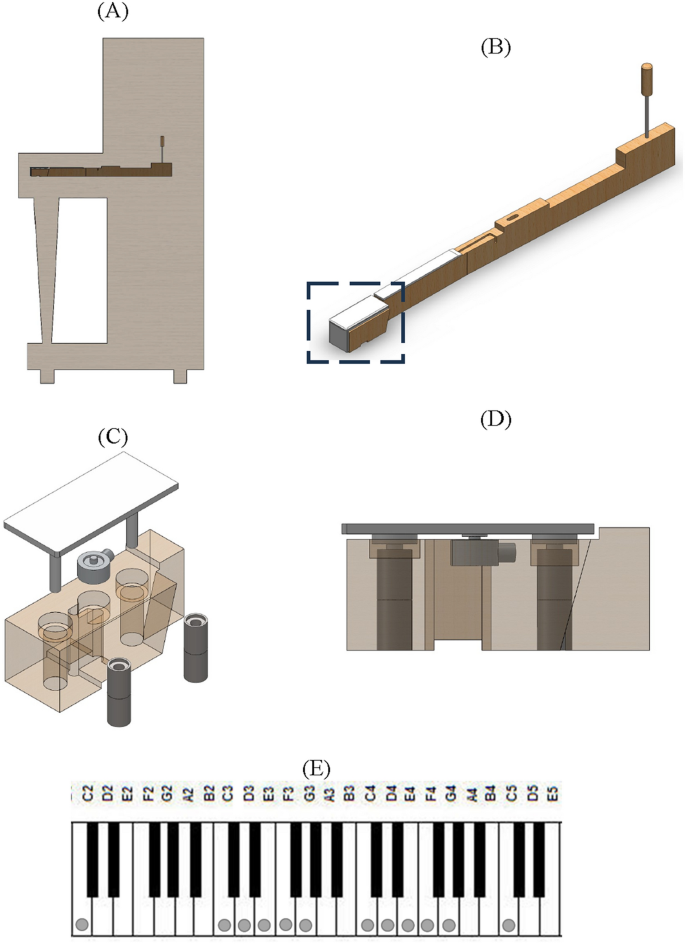Practically Feasible Sensor-Embedded Kinetic Assessment Piano System for Quantifying Striking Force of Digits During Piano Playing
IF 1.6
4区 医学
Q4 ENGINEERING, BIOMEDICAL
引用次数: 0
Abstract
Abstract Purpose Understanding the pathogenesis of playing-related hand disorders through investigations based on coordination and biomechanical perspectives is indispensable. This study aimed to establish a sensor-embedded kinetic assessment piano system (SeKAPS) and conduct reliability and validity tests for this system. In addition, the differences in digit coordination between professional pianists and non-musicians were investigated. Methods Twelve subminiature load cells were embedded in the middle of the 12 corresponding keys of an upright piano. A customized calibrated system with a load cell was used to establish the criterion-related validity of the SeKAPS. The reliability of the SeKAPS was determined by 22 volunteer pianists. The other ten professional pianists and ten non-musicians were recruited to indicate the feasibility of the SeKAPS to distinguish the performing differences between groups. Results The R 2 values of regression analyses for the load cells were 0.993–0.999 ( p < 0.001), indicating high validity. The ICC values of the modified keys were 0.82–0.93, indicating high reliability. The results indicate that SeKAPS is accurate in detecting the striking force of digits during piano playing. Significant differences existed in the mean peak force and mean CVs of the peak force of the specific digits between the two groups. The results showed differences in finger control strategies between the pianists and non-musicians. Conclusion The SeKAPS may provide a valuable assessment for assisting pianists in understanding digit force control and movement strategies to achieve efficient digit coordination.

实际可行的嵌入式传感器动态评估钢琴系统,用于量化钢琴演奏过程中数字的冲击力
目的从协调性和生物力学的角度研究游戏相关手部疾病的发病机制是必不可少的。本研究旨在建立传感器嵌入式钢琴动力学评估系统(SeKAPS),并对该系统进行信度和效度检验。此外,研究了专业钢琴家和非音乐家在手指协调方面的差异。方法在立式钢琴的12个对应琴键中间嵌入12个微型测压元件。使用带有称重传感器的定制校准系统来建立SeKAPS与标准相关的有效性。SeKAPS的可靠性是由22名志愿钢琴家确定的。另外10名专业钢琴家和10名非音乐家被招募来表明SeKAPS区分不同群体之间演奏差异的可行性。结果测压元件回归分析的r2值为0.993 ~ 0.999 (p <0.001),表明高效度。修改后的密钥ICC值为0.82 ~ 0.93,可靠性较高。结果表明,SeKAPS在钢琴弹奏过程中数字敲击力的检测是准确的。两组在具体指的平均峰值力和平均峰值力cv上存在显著差异。结果显示,钢琴家和非音乐家在手指控制策略上存在差异。结论SeKAPS可以帮助钢琴家了解手指力量控制和运动策略,以达到有效的手指协调。
本文章由计算机程序翻译,如有差异,请以英文原文为准。
求助全文
约1分钟内获得全文
求助全文
来源期刊

Journal of Medical and Biological Engineering
ENGINEERING, BIOMEDICAL-
CiteScore
4.30
自引率
5.00%
发文量
81
审稿时长
3 months
期刊介绍:
The purpose of Journal of Medical and Biological Engineering, JMBE, is committed to encouraging and providing the standard of biomedical engineering. The journal is devoted to publishing papers related to clinical engineering, biomedical signals, medical imaging, bio-informatics, tissue engineering, and so on. Other than the above articles, any contributions regarding hot issues and technological developments that help reach the purpose are also included.
 求助内容:
求助内容: 应助结果提醒方式:
应助结果提醒方式:


